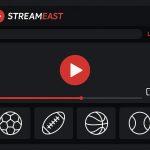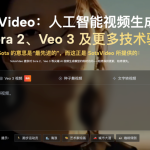The way we learn has changed dramatically over the past decade. Instead of relying solely on classrooms, textbooks, or workshops, people now turn to video tutorials for everything from technical skills and software training to cooking lessons and DIY projects. Platforms like YouTube, Vimeo, and countless educational websites make it easy to access knowledge on demand.
But while streaming is convenient, it isn’t always reliable. An unstable internet connection, limited access to data, or content that disappears after a period of time can create unnecessary barriers to learning. That’s why many people are now looking for ways to turn video tutorials into offline learning content that they can access anytime, anywhere.
Why Offline Learning Still Matters
Streaming might dominate the modern education space, but offline access offers unique benefits that are often overlooked. For students, having offline tutorials means they can study during commutes, flights, or late nights without worrying about connectivity. For professionals, it allows them to revisit training sessions just before a presentation or certification exam. Even hobbyists benefit offline learning makes it easier to practice a new skill step by step without interruptions from buffering or ads.
Offline content also helps in building consistency. Instead of depending on a good connection every time you want to study, you have reliable access to your library of saved tutorials. This reduces friction and keeps motivation high, especially for long-term learning goals.
Challenges with Keeping Video Tutorials
As useful as they are, video tutorials often come with limitations. Some are locked behind platforms that only allow temporary streaming access. Others require subscriptions that don’t always guarantee long-term availability. Even free tutorials on platforms like YouTube can disappear without notice if the creator decides to remove them.
Relying solely on streaming also introduces issues like poor video quality, buffering during peak hours, or constant distractions from suggested content and advertisements. For someone who is serious about learning, these interruptions can break focus and slow down progress.
This is why transforming tutorials into offline learning content is becoming more than a convenience it’s a necessity.
Safe Ways to Turn Videos into Offline Resources
When it comes to saving tutorials for offline learning, safety and reliability should always come first. Using random software or unverified websites can put your device at risk of viruses or malware. Screen recording is another method some people try, but it usually produces poor results and wastes time.
The best approach is to use a trusted tool that allows you to download videos directly in a clean, straightforward way. With the right solution, you can quickly build your personal library of tutorials without dealing with complicated steps or worrying about security.
A great example is Tubly, which makes the process fast and user-friendly. You simply copy the video link, paste it into the tool, and choose your preferred format. In minutes, you’ll have a saved version of the tutorial that you can keep on your device for as long as you need it. By cutting out unnecessary hurdles, Tubly makes it easy to focus on what really matters learning.
Building an Offline Learning Library
Once you’ve downloaded your tutorials, the real value comes in how you organize and use them. Treat your offline content like a personal library that grows over time. For example, if you’re learning coding, you might save tutorials on HTML, CSS, and JavaScript in separate folders. If you’re following a photography course, you could group videos by topics like lighting, editing, or composition.
Organizing your files this way makes it easy to revisit lessons and build a structured learning path. Unlike streaming platforms that mix your saved content with unrelated recommendations, an offline library is focused only on what you’ve chosen. This helps you stay disciplined and prevents distractions that can derail your learning session.
Managing file sizes is also an important part of creating an efficient library. While high-definition files look great, they take up more storage space. For some tutorials, audio-only versions may be enough such as lectures or presentations while visual-heavy content benefits from higher resolution. Balancing these choices helps maximize both storage and accessibility.
How Offline Access Improves Learning Retention
Turning tutorials into offline content doesn’t just make them more accessible it also improves how effectively you learn. When you have the ability to pause, rewind, and replay without worrying about buffering, you gain more control over the pace of your study.
This kind of control is especially helpful for complex subjects. For example, learning a programming language often requires stopping at each step to practice coding. Offline access allows you to rewatch instructions as many times as necessary until you fully understand. Similarly, practicing new recipes, music lessons, or design techniques becomes easier when the video is available offline and can be replayed endlessly.
Research has shown that repetition is key to mastering skills. Having tutorials saved offline ensures you can revisit material whenever you need reinforcement, which makes the learning experience deeper and more effective.
Flexibility for Different Lifestyles
Everyone has a different schedule, and offline tutorials make it easier to fit learning into daily life. Students can study during long bus rides. Professionals can catch up on training sessions while traveling for work. Parents can squeeze in tutorials at night after the kids are asleep.
Offline content also bridges global accessibility gaps. In countries where internet costs are high or connections are unreliable, downloading tutorials when Wi-Fi is available ensures uninterrupted learning later. This makes education more inclusive, allowing people everywhere to access knowledge without being held back by connectivity issues.
The Future of Video Tutorials and Offline Access
As online learning continues to expand, the demand for offline access will only grow. Learners want control over their education, not limitations. While streaming platforms will remain popular, tools that empower people to download and preserve content will become an increasingly important part of the learning ecosystem.
Creators and educators also benefit when their tutorials are more accessible. A learner who can save and revisit a tutorial is more likely to master the skill, share the knowledge, and return for more. Offline access strengthens the relationship between content creators and learners by making education more practical and dependable.
Final Thoughts
Video tutorials are one of the most powerful tools for modern learning, but their full potential is unlocked when you can access them offline. Turning them into personal learning content eliminates distractions, ensures reliability, and gives you the freedom to study wherever and whenever you choose.
With safe and simple tools like Tubly, you can transform your favorite tutorials into a long-term resource that supports your growth. Instead of worrying about unstable internet, disappearing content, or streaming limitations, you’ll have a personal library of knowledge at your fingertips.
In the end, offline access isn’t just about convenience it’s about making learning sustainable, flexible, and truly your own. By turning video tutorials into offline learning content, you take control of your education and ensure that valuable knowledge is always within reach.
Lynn Martelli is an editor at Readability. She received her MFA in Creative Writing from Antioch University and has worked as an editor for over 10 years. Lynn has edited a wide variety of books, including fiction, non-fiction, memoirs, and more. In her free time, Lynn enjoys reading, writing, and spending time with her family and friends.















